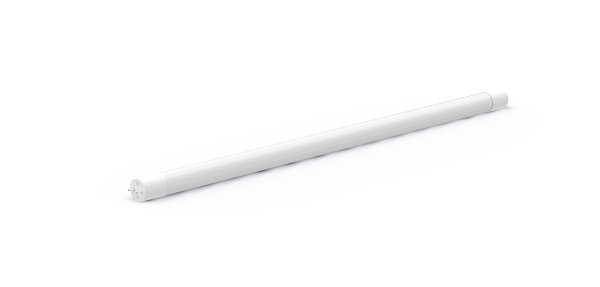The world
LED lighting market has passed into the maturity stage, of which the saturation makes a few segments struggle. According to stats from LEDinside, a division of market research company TrendForce, the world LED lighting market reached a value of USD 29.6 billion in 2016 and by 2017 the number will have possibly amounted to USD 33.1 billion, suggesting more room for the penetration rate of LED lighting, currently at 52% and continually to grow. However, price wars and technology competitions that run in the low-end market rankle international LED manufacturers. Hence, a part of Tier 1 companies, fairly competitive in finance and technology, tend to focus on high efficient LED lighting and other niche markets.
As part of US economic policy, inside the lighting industry in North America the claim ‘Assembled in USA’ aims to expand the domestic market and tailor production of home companies more towards America’s market segments. LEDinside expects, just as previous changes in America’s solar PV market that led to the rise of solar PV installers, the claim will foster the growth of US domestic LED lighting solution providers for new lighting projects and traditional or first-gen LED lighting replacement. Plenty of job vacancies will also emerge because of that.
American lighting companies are being highly active in developing LED lighting businesses, leading the market share of LED products to rise continuously. The demand for commercial and jobsite LED lighting is quite strong in America’s market at the moment, and especially those for troffers, panels, tunnel and high bay luminaires grow at fastest speed, which also speeds up the development of smart lighting and visible light communication (VLC).
LEDinside’s data presents the consolidated value of the world LED commercial lighting market (mostly tubes, troffers, and panel lights) in 2017 amounts to USD 6.347 billion. The CAGR (compound annual growth rate) over the period from 2016 to 2020 is projected to be 12%. The demand for LED tubes in North America stays high, and while shipping out supply, light manufacturers and project bidders have to ensure their products meet the stringent criteria of DLC 4.0, a set of quality and efficacy standards the DesignLights Consortium advocates to accelerate the widespread adoption of high-performing, energy efficient lighting solutions, after it took effect.
So, here comes the question: how is DLC 4.0 going to affect LED light designs, choice of chips, and corporate cost structures?
Underdriving LEDs vs Overdriving LEDs
Currently, lighting companies have been cautiously choosing LED chips and components for meeting different market segments needs and applications. In general, there are two approaches for the goal: 1) to overdrive LEDs to reduce numbers of light sources, and 2) to underdrive LEDs to enhance the quality of light.
In terms of high efficient lighting, according to Max Lin, Project Director at Sales & Marketing Center of the global LED chipmaker Epistar, ever since the price of LED chip has dipped to a sweet spot,, lighting companies tend to overdrive LEDs with high current to reach high luminous efficacy for the purpose of cutting down chip number to reduce cost. This approach with the pursuit of better lumens per dollar is commonly-used in manufacturing regular
LED tube and bulb products. Mainstream as it is, overdriving LEDs still encounters several challenges regarding light quality, product lifespans, and, most of all, choice of thermal modules. Qualified thermal modules certainly come with extra cost. Also, for instance, overdrive LED tubes can encounter light quality problems, such as unevenness with hot spots and dark areas, and heat dissipation issues due to low number of chips used.
Luke Lu, Project Director Planning Office (left),and Max Lin, Marketing Director (right) at Epistar
(Image: LEDinside)
Underdriving LEDs, in contrary, refers to the method to power high efficacy LED chips with currents lower than typical loads, which is a solution that avoids problems of overdriving LEDs and helps to generate tubes with higher quality. With the trend that full glass tubes prevail and slowly replace traditional half round plastic tubes, to underdrive high efficacy LED chips not only improves light quality but also extends performance stability and fixture lifespans. Moreover, it meets DLC 4.0 criteria and at the same time achieves a higher efficiency of over 150 Lm/W.
Right LED chip designs, thermal modules, and blasters in glass tubes come as ideal combinations for high efficacy and quality lighting for the high-end market that 1st tier manufacturers aim at.
IPs Matter: Patents Are No Less Important Than Products
Epistar’s clients in the States have successfully won lighting projects from local hospitals, public facilities and buildings by actively replacing T5/T8 fluorescent tubes with LED tubes. Meanwhile, the ‘Made in USA’ claim also earned them wider reception and popularity than before. A high efficient LED tube can consume quite an amount of LED chips, approximately several times, even ten times at most, the amount used by a regular low-cost LED bulb.
Epistar, with extensive experience in the development of LED chip, owns abundant LED patents and cross-licenses and it therefore becomes the priority of its clients shipping finished products to markets in Europe and North America. Another advantage of Epistar is its capability of sustaining a stable flow of quality shipment. Aside from North America, it also targets Japan, where the market emphasizes quality and expresses great demand for the next generation LED lighting for 2020 Tokyo Summer Olympics.
All considered, it seems a definite trend for some markets to consistently reach high quality and efficiency has been formed, and underdrive LED products become one of the favorable solutions for 1st tier lighting companies.












